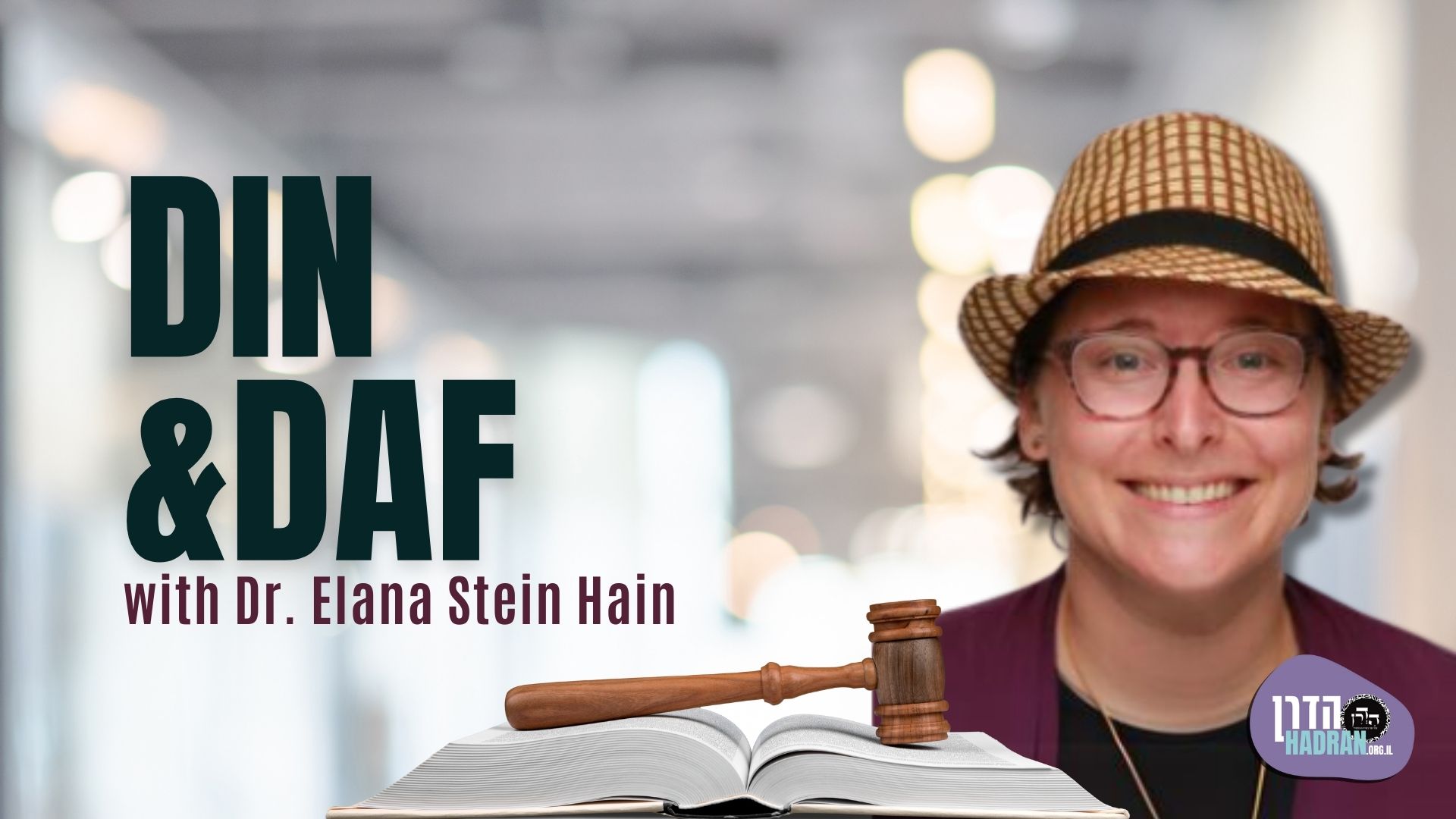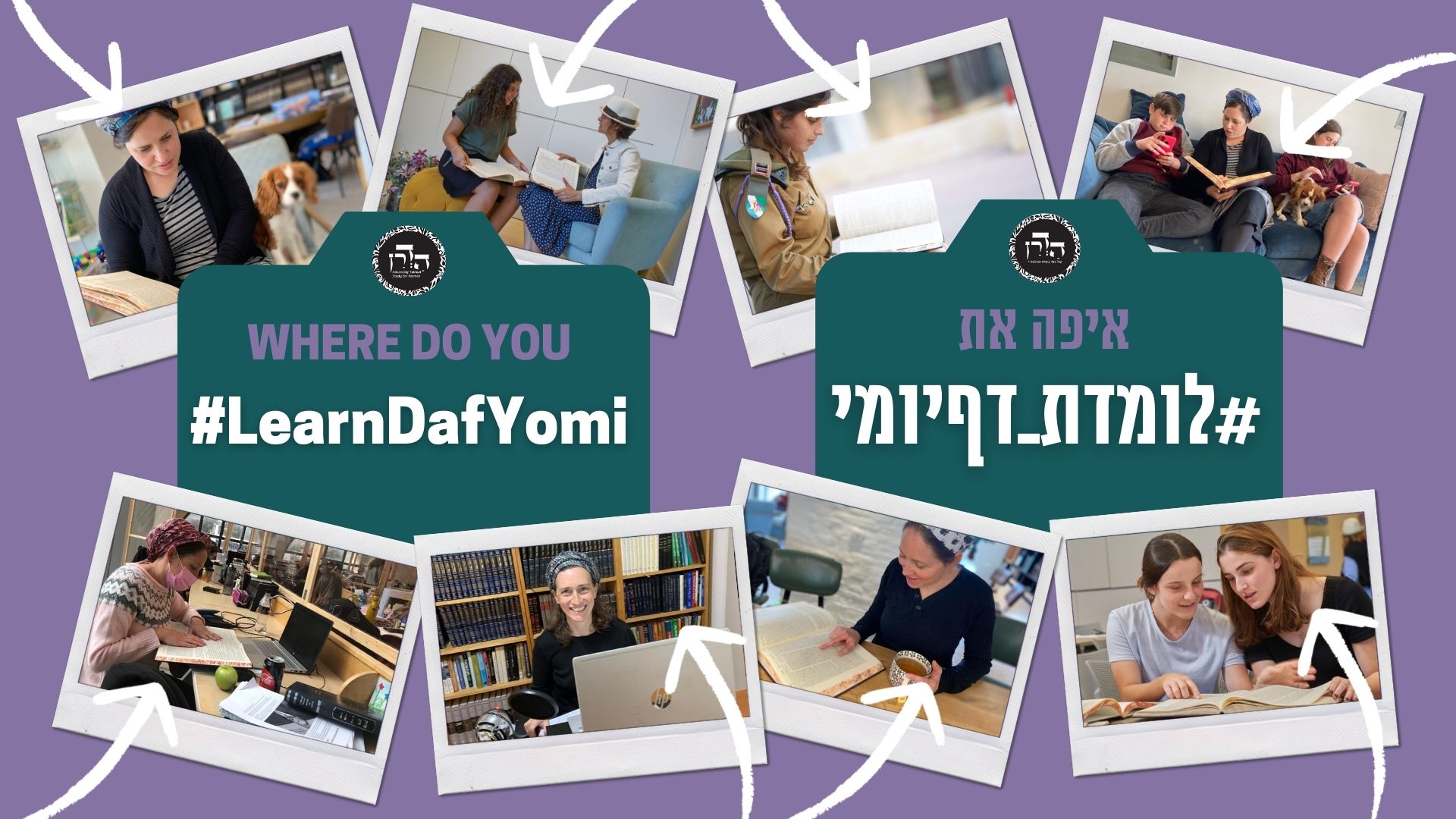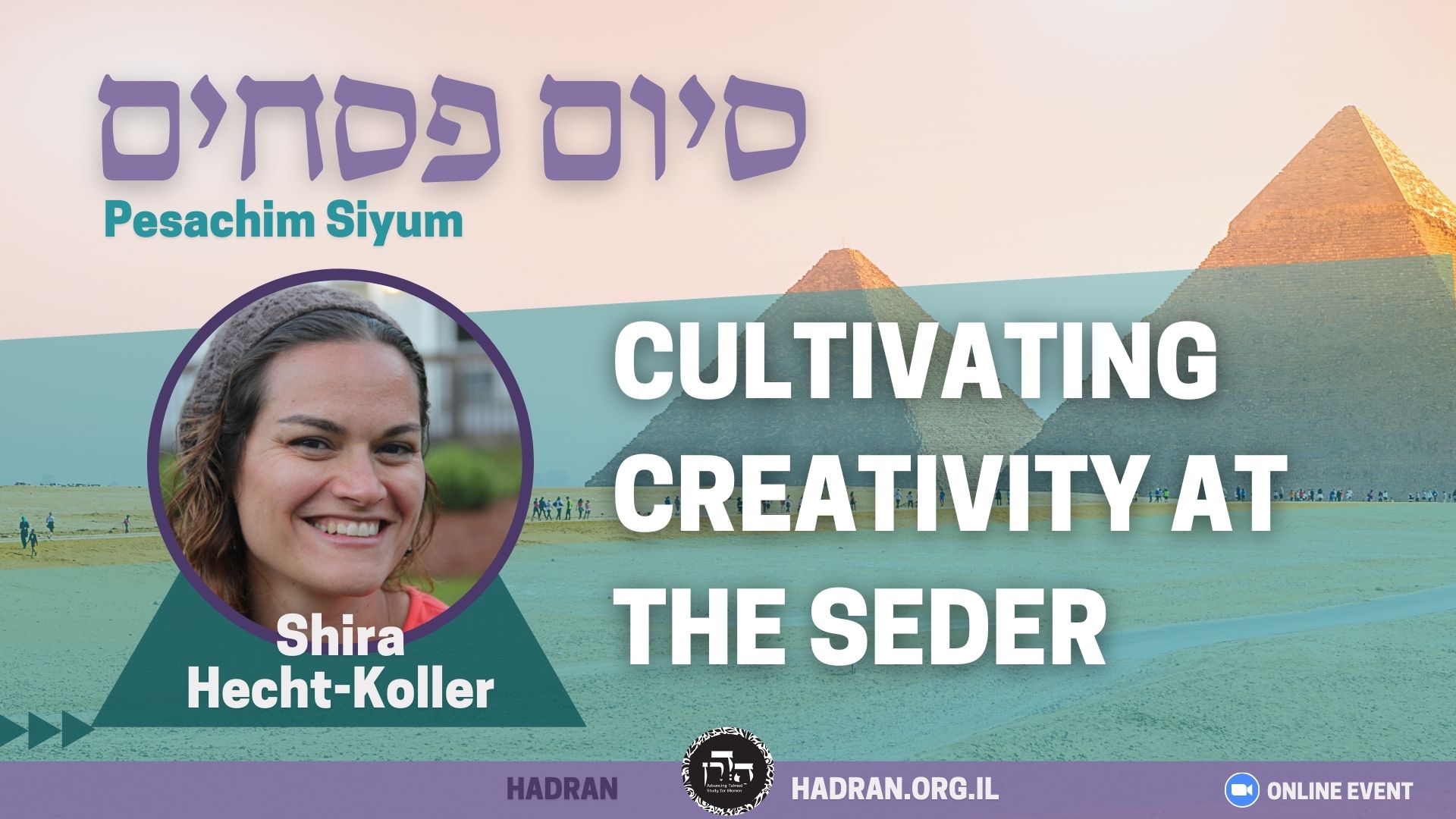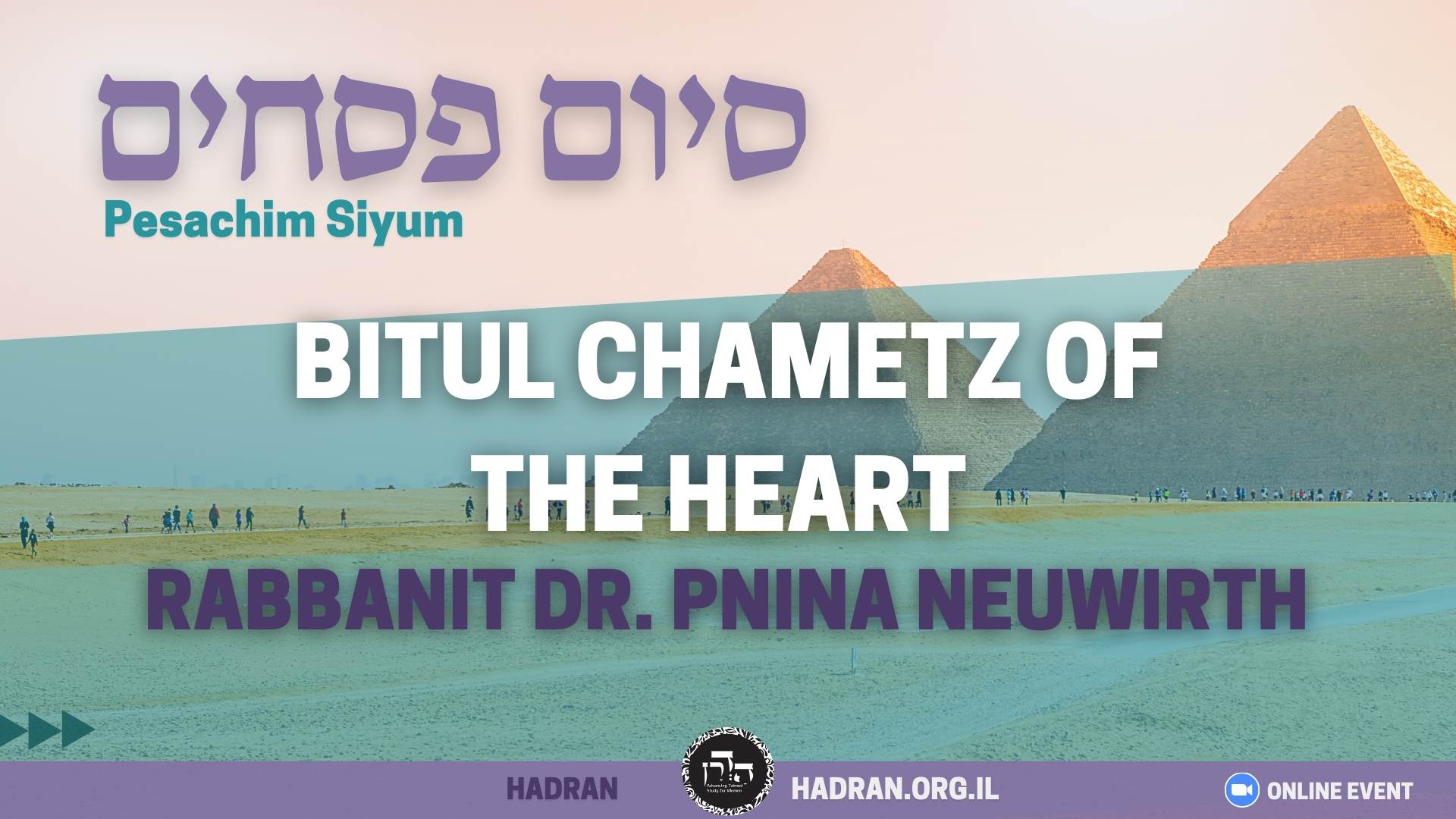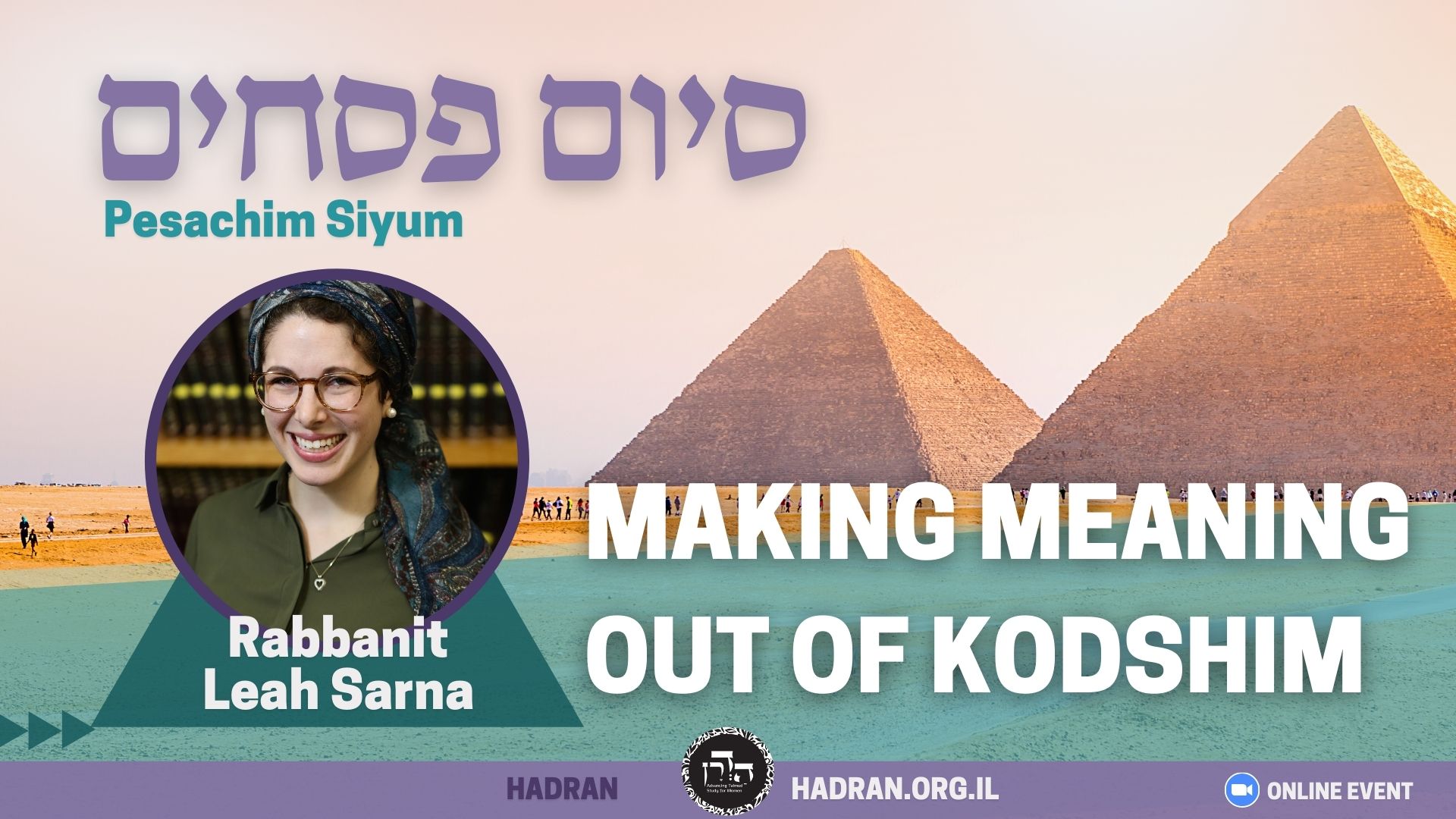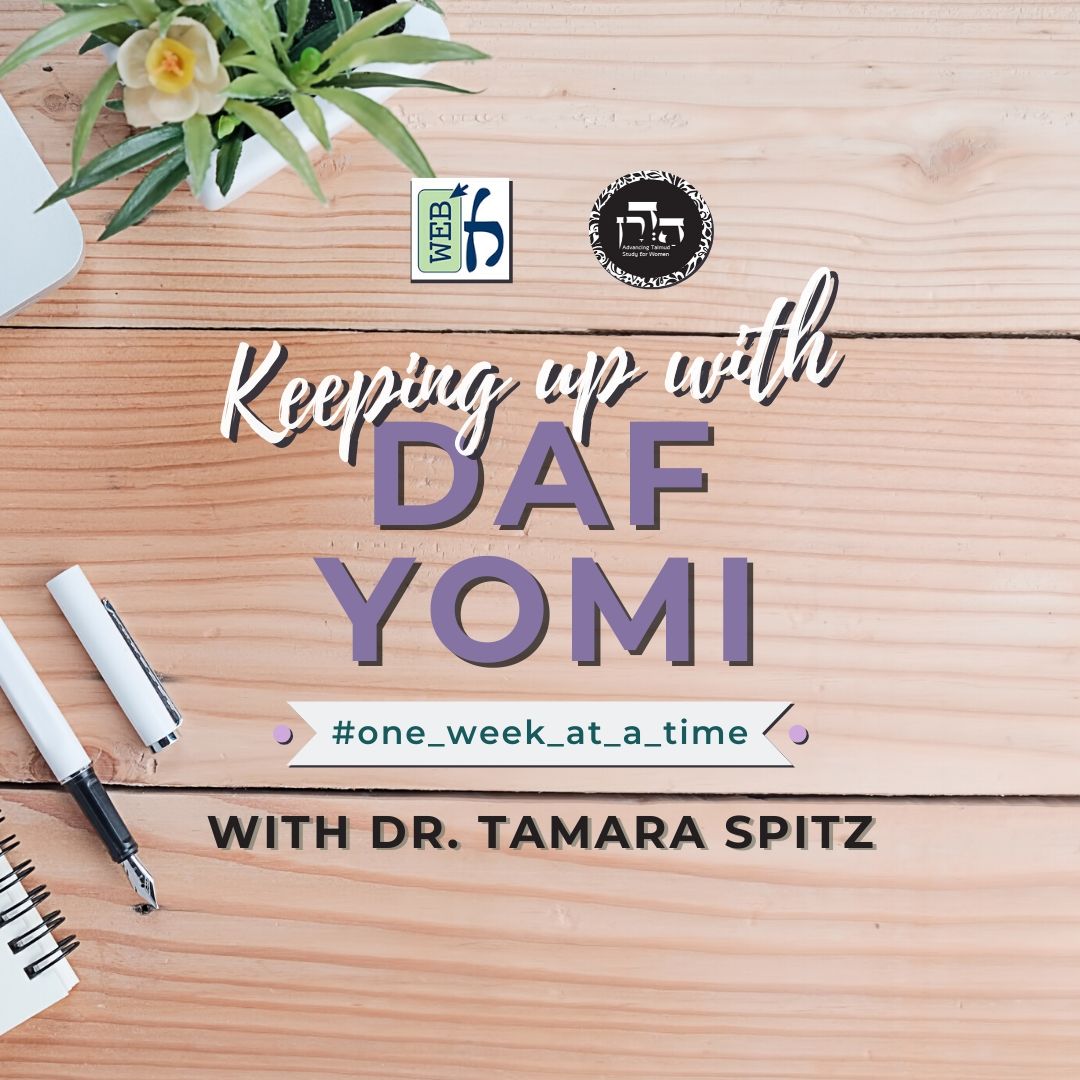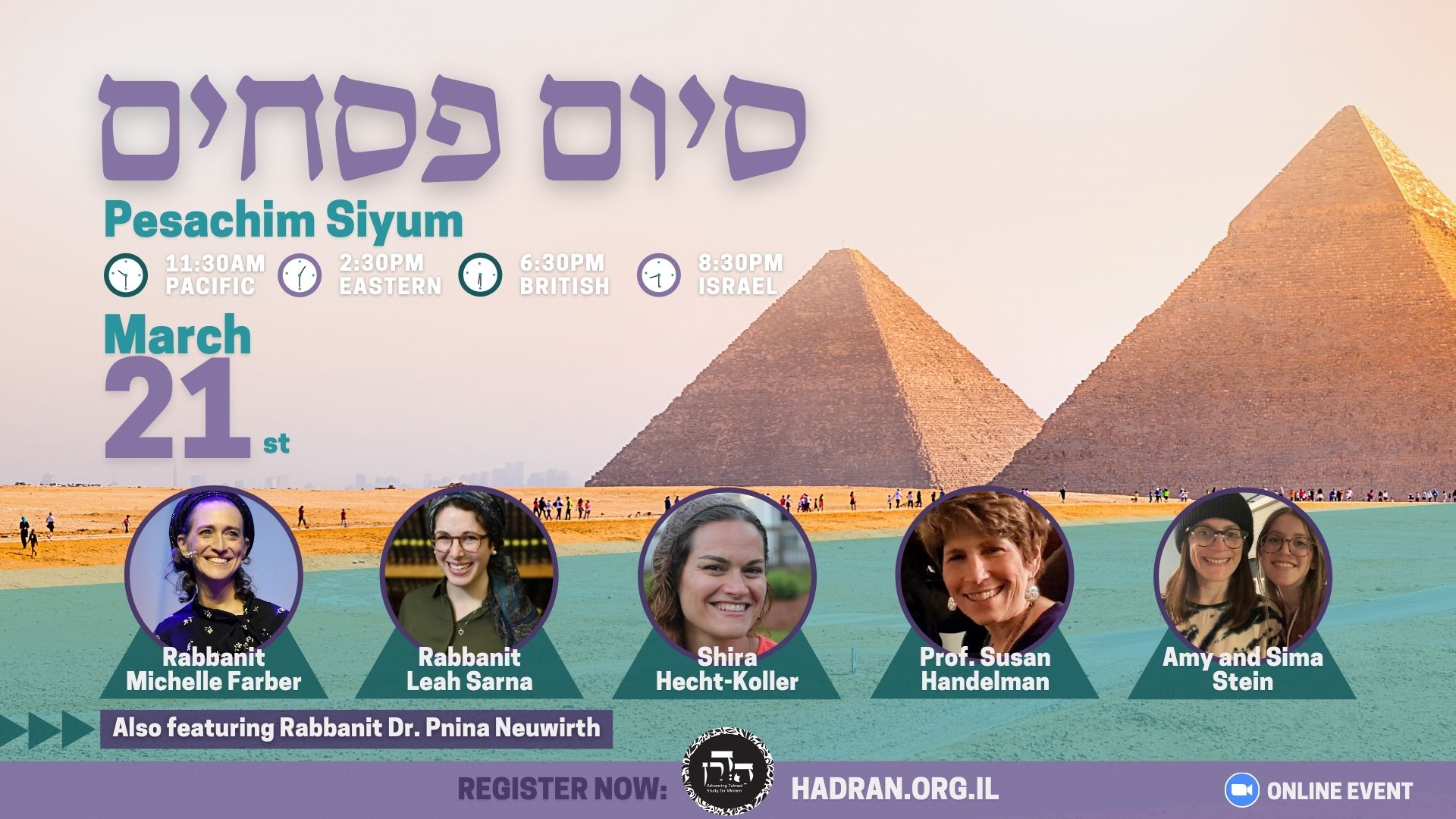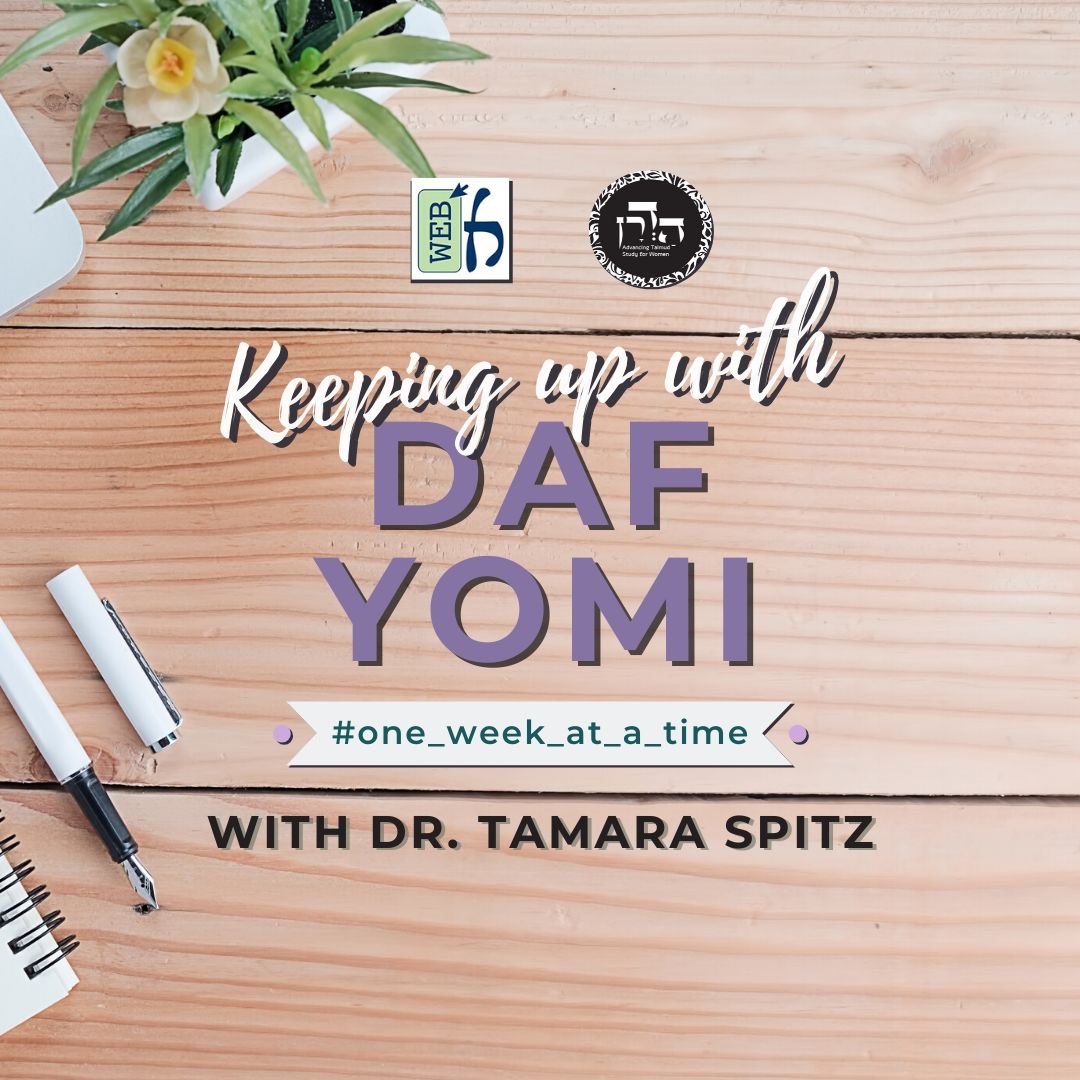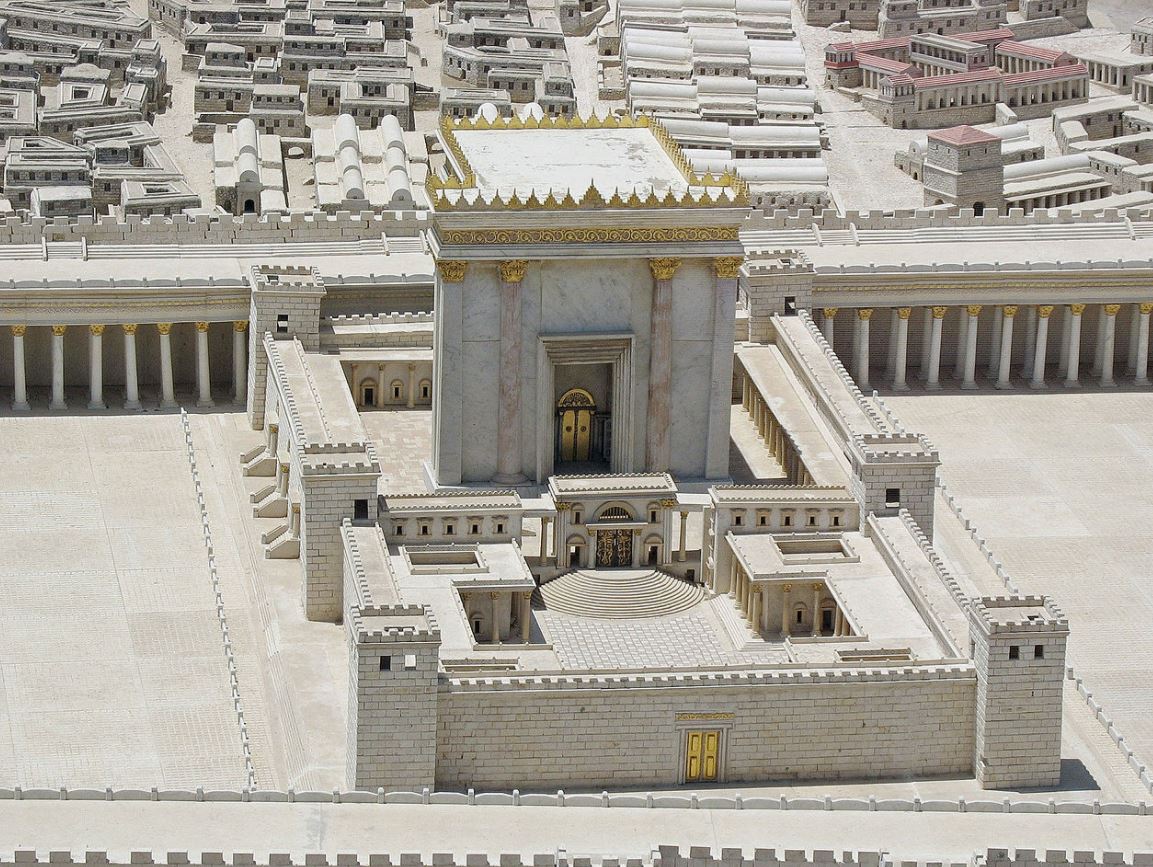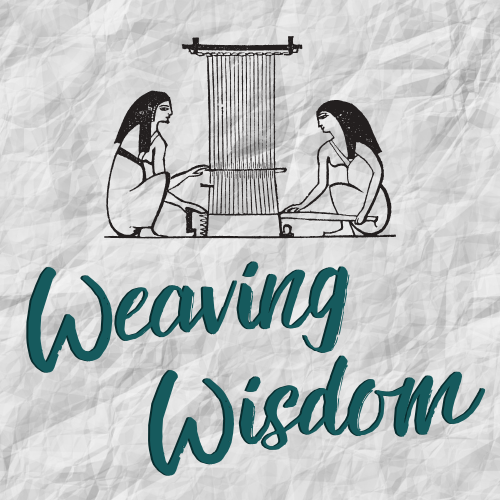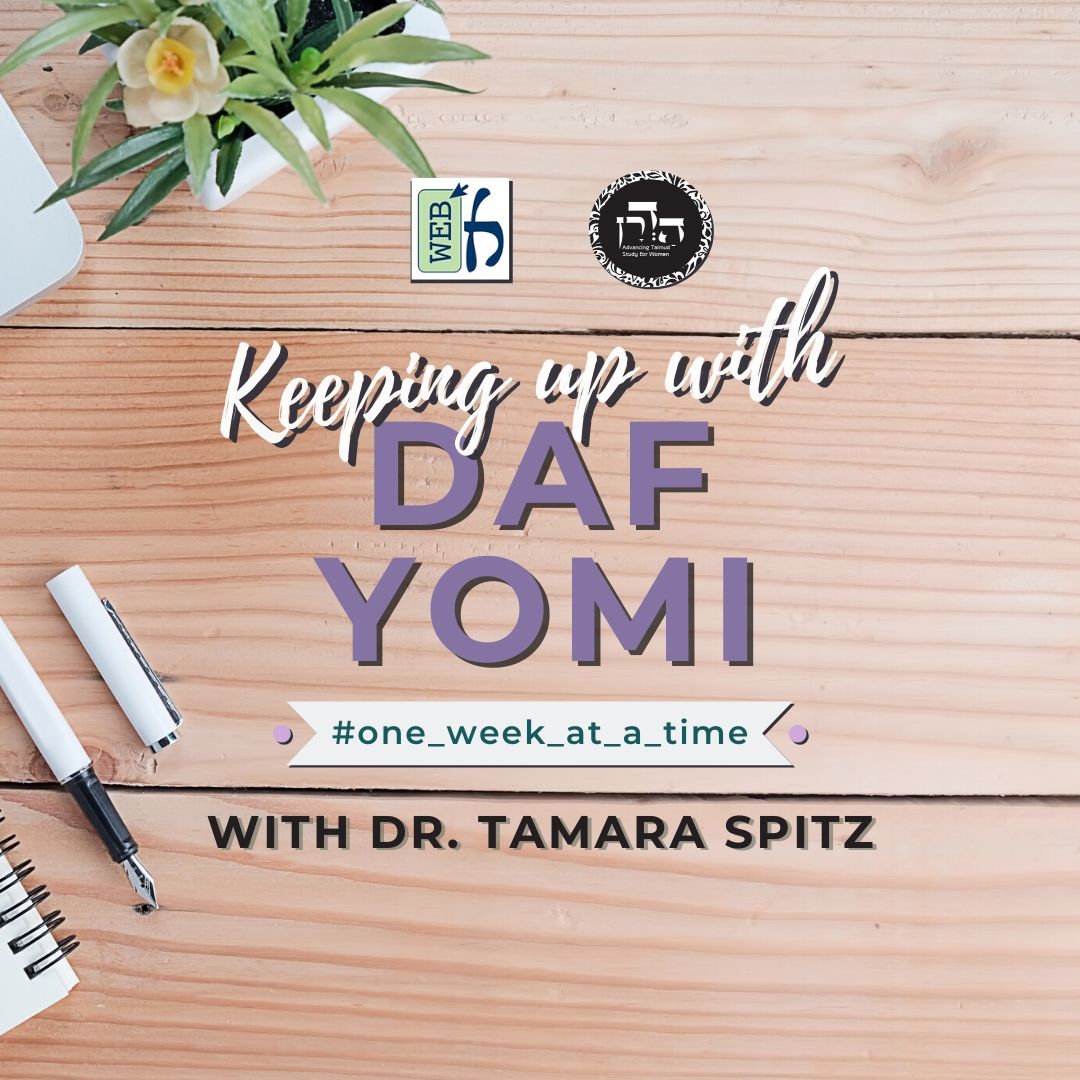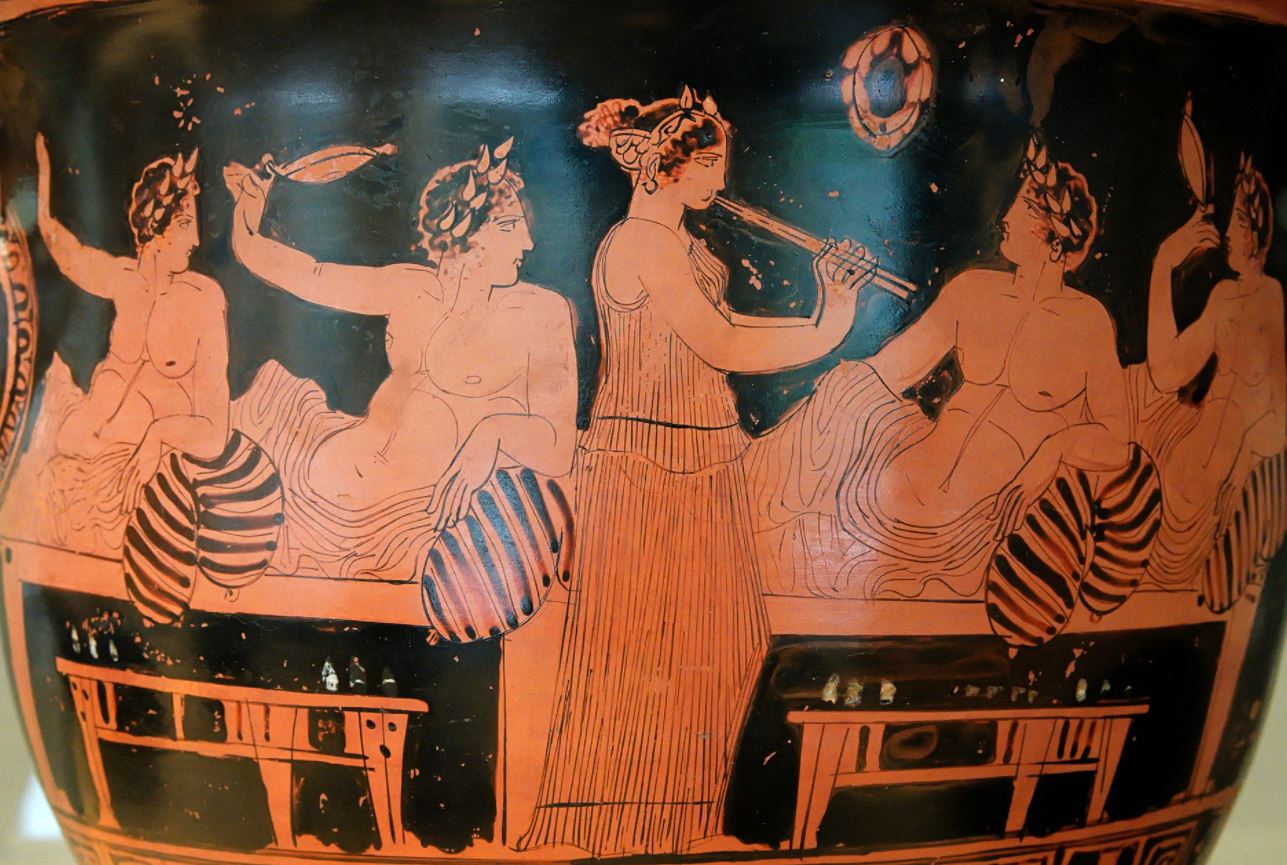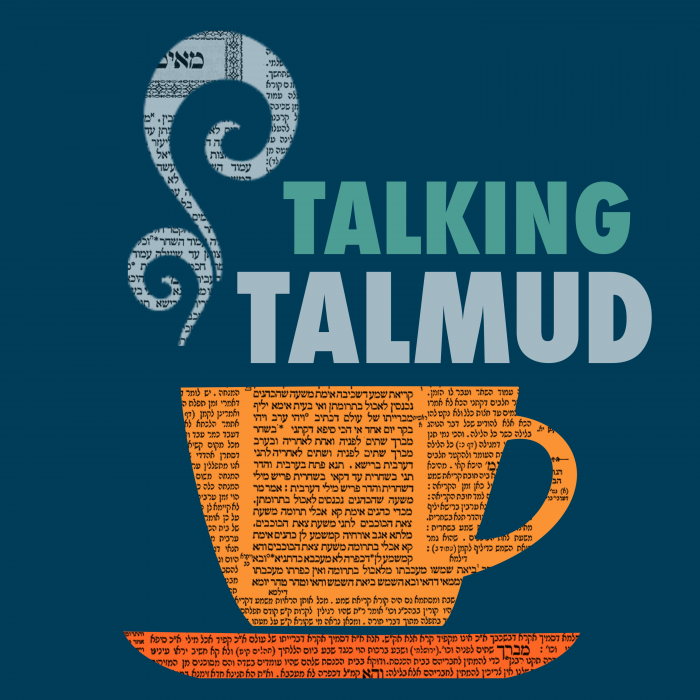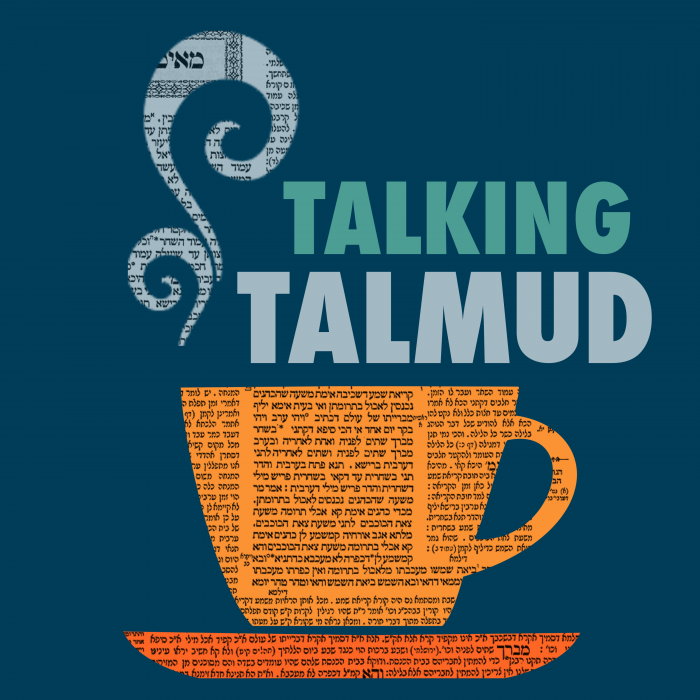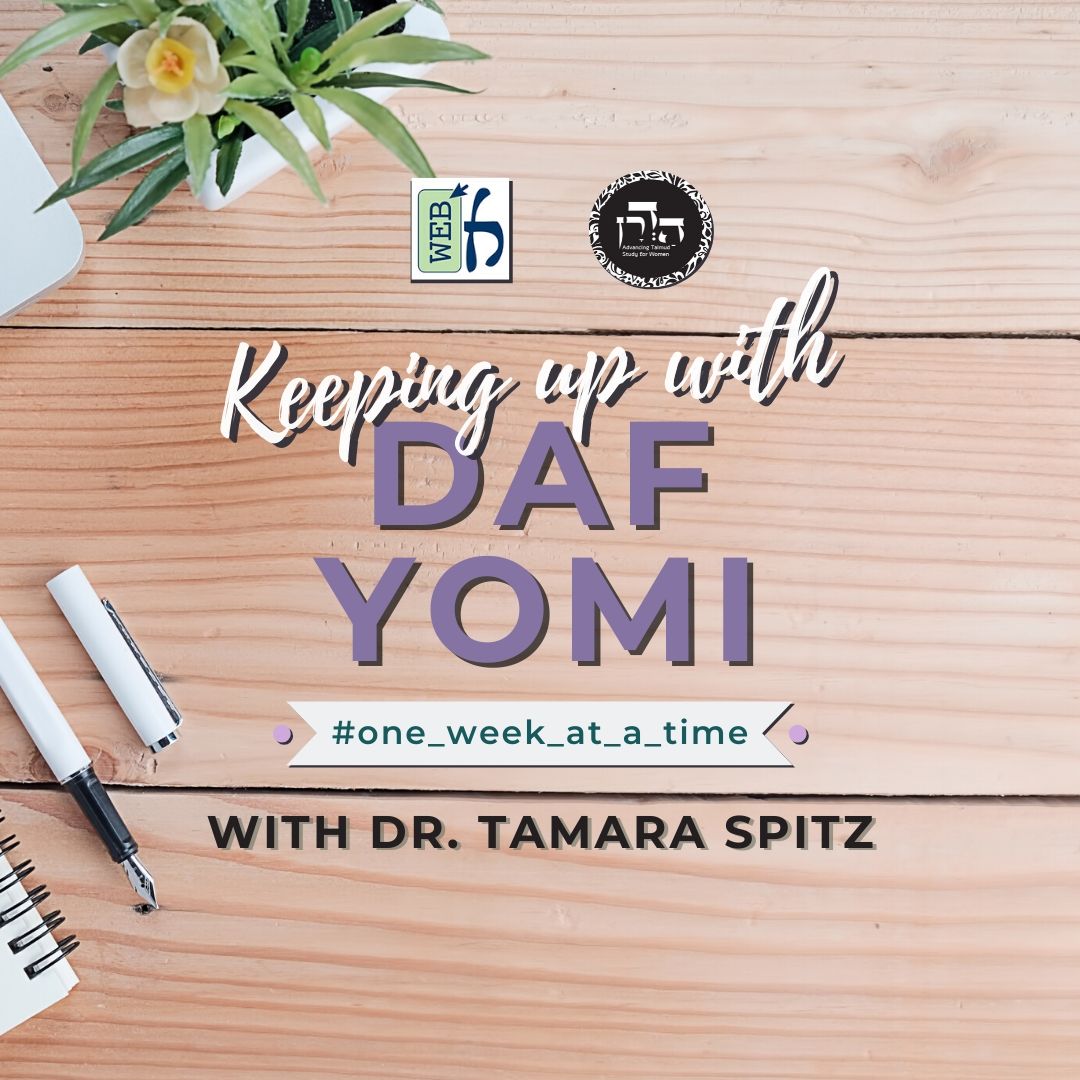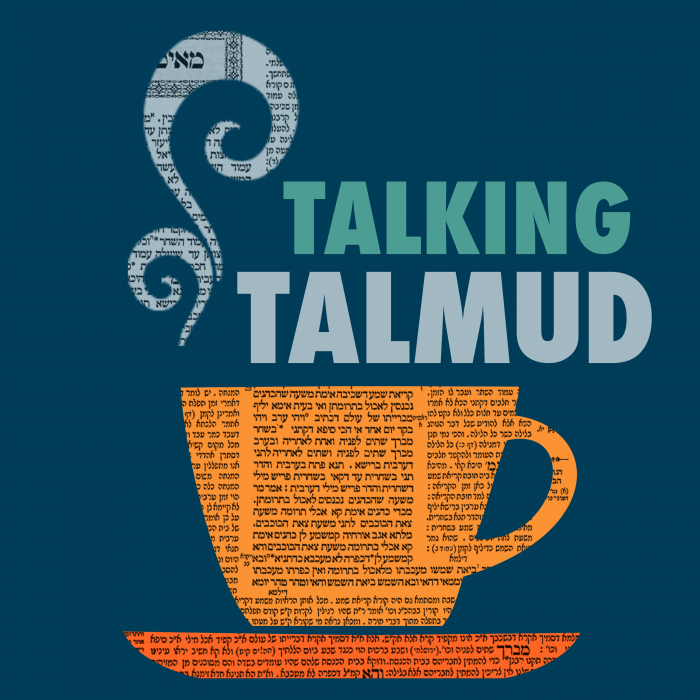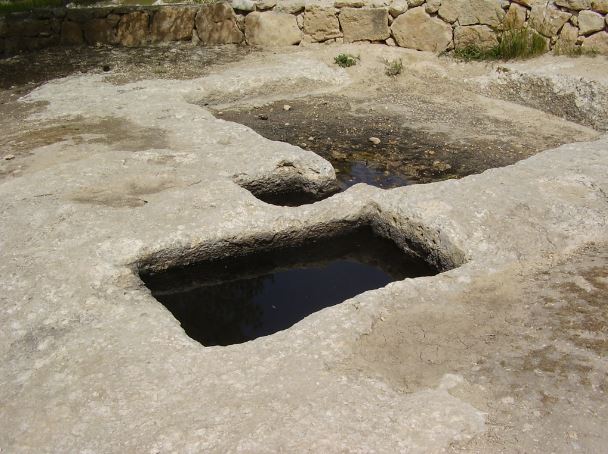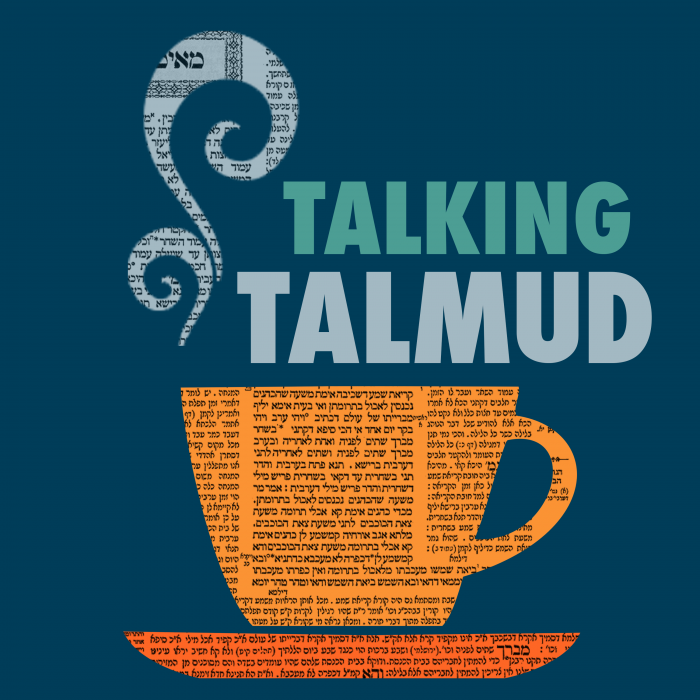Some of the cases in the mishna seem quite obvious, so why are they there? If one holds that one who injures in a destructive manner on Shabbat is exempt, why in the mishna is one liable for slaughtering the animal when the sacrifice became disqualified – the slaughter was purely destructive. This question is asked on three case sin the mishna and on a case brought in a braita. The gemara explains in each case what about each case was constructive. The gemara brings a statement of Rav regarding a guilt offering whose owners died or received atonement from a different animal in its stead and it is left to graze. If someone slaughters it without any particular intent it counts as a burnt offering – this implies that a sacrifice can be uprooted automatically and can default to a different sacrifice without intent. This should apply also to a Pesach whose owners left the animal or became impure or died. If so, this contradicts a braita on our mishna that says one must burn it immediately if it was slaughtered – that implies it was a Pesach that was disqualified and it didn’t default automatically to a peace offering. The gemara bring 5 attempts to resolve the contradiction and all are rejected except for one.
This week’s learning is sponsored by Caroline Bollag l’ilui nishmat Pinchas ben Menashe Peyser.
Want to dedicate learning? Get started here:


Today’s daily daf tools:
This week’s learning is sponsored by Caroline Bollag l’ilui nishmat Pinchas ben Menashe Peyser.
Today’s daily daf tools:
Delve Deeper
Broaden your understanding of the topics on this daf with classes and podcasts from top women Talmud scholars.
New to Talmud?
Check out our resources designed to help you navigate a page of Talmud – and study at the pace, level and style that fits you.
The Hadran Women’s Tapestry
Meet the diverse women learning Gemara at Hadran and hear their stories.
Pesachim 73
״עֲבוֹדַת מַתָּנָה אֶתֵּן אֶת כְּהֻנַּתְכֶם וְהַזָּר הַקָּרֵב יוּמָת״, עָשׂוּ אֲכִילַת תְּרוּמָה בִּגְבוּלִין כַּעֲבוֹדַת בֵּית הַמִּקְדָּשׁ.
“I have given you the priesthood as a service of gift; and the stranger that comes near shall be put to death” (Numbers 18:7). This verse is found in the context of the priestly gifts, including teruma, and comes to teach us that they made the eating of teruma in the outlying areas, i.e., outside the Temple, like the service of the Temple.
שְׁחָטוֹ שֶׁלֹּא לְאוֹכְלָיו. פְּשִׁיטָא! כֵּיוָן דְּהָתָם — פָּסוּל, הָכָא — חַיָּיב! מִשּׁוּם דְּתַנָּא סֵיפָא פָּטוּר, תְּנָא רֵישָׁא חַיָּיב.
We learned in our mishna that if one unwittingly slaughtered the Paschal lamb on Shabbat for those who cannot eat it or for those who did not register for it, he is liable to bring a sin-offering. The Gemara asks: It is obvious. Since there, with regard to the slaughter itself, it is invalid, here, with regard to Shabbat, he is liable, for it turns out that he performed a prohibited labor that was not necessary for sacrificing an offering. The Gemara answers: Since the latter clause of the mishna taught cases in which he is exempt from bringing a sin-offering, the first clause taught cases in which he is liable, even though it does not really teach us anything new.
וְהָא נָמֵי פְּשִׁיטָא, מִשּׁוּם דְּהָתָם כָּשֵׁר, הָכָא פָּטוּר! אֶלָּא, אַיְּידֵי דִּתְנָא שְׁחָטוֹ שֶׁלֹּא לִשְׁמוֹ בְּשַׁבָּת, תְּנָא נָמֵי שֶׁלֹּא לְאוֹכְלָיו. וְהִיא גּוּפָא לְמָה לִי? מִשּׁוּם דְּקָבָעֵי לְאִיפְּלוֹגֵי רַבִּי אֱלִיעֶזֶר וְרַבִּי יְהוֹשֻׁעַ.
The Gemara asks: But this also is obvious, since there, the offering is valid, here with regard to Shabbat he is exempt, as the slaughter did not involve a desecration of Shabbat. Rather, since the mishna taught the case of one who slaughtered the Paschal lamb for a different purpose on Shabbat, it also taught the case of one who slaughtered it for those who cannot eat it. The Gemara asks further: And it itself, the case of slaughtering the Paschal offering for a different purpose, why do I need it? The halakha there is also obvious. The Gemara answers: Since the mishna wished to teach the dispute between Rabbi Eliezer and Rabbi Yehoshua, it taught all these other halakhot as well.
אֲמַר לֵיהּ רַב הוּנָא בַּר חִינָּנָא לִבְרֵיהּ: כִּי אָזְלַתְּ לְקַמֵּיהּ דְּרַבִּי זְרִיקָא, בָּעֵי מִינֵּיהּ: לְדִבְרֵי הָאוֹמֵר ״מְקַלְקֵל בְּחַבּוּרָה — פָּטוּר״, ״שְׁחָטוֹ שֶׁלֹּא לְאוֹכְלָיו — חַיָּיב״? מָה תִּיקֵּן?!
The Gemara relates that Rav Huna bar Ḥinnana said to his son: When you go before Rabbi Zerika, ask him: According to the opinion that says that one who inflicts a destructive wound is exempt, i.e., that one who causes a wound on Shabbat that has no constructive effect but rather is purely destructive in nature has not performed a prohibited labor and is therefore exempt from bringing a sin-offering, how are we to understand the mishna’s ruling that one who slaughtered the Paschal lamb for those who cannot eat it is liable? Since the slaughter is invalid, he should be seen as having wounded the animal in a way that brings no benefit and is simply destructive. What has he improved through the slaughter that he should be liable for having performed a prohibited labor?
תִּיקֵּן אִם עָלוּ לֹא יֵרְדוּ.
The Gemara answers: He has improved it in that if the sacrificial parts of the offering ascended to the top of the altar, they do not descend. The halakha is that if the sacrificial parts of a disqualified offering are inadvertently brought up to the top of the altar, they need not be removed and they may be burned on the altar. Thus, the slaughter had some constructive effect.
שְׁחָטוֹ וְנִמְצָא בַּעַל מוּם חַיָּיב, מָה תִּיקֵּן? תִּיקֵּן בְּדוּקִּין שֶׁבָּעַיִן, וְאַלִּיבָּא דְּרַבִּי עֲקִיבָא דְּאָמַר אִם עָלוּ לֹא יֵרְדוּ.
The Gemara asks further: We learned in the mishna that if one slaughtered the Paschal lamb and it was found to have a blemish, he is liable to bring a sin-offering. Here too, it may be asked: What has he improved through the slaughter, so that he should be liable? The Gemara answers: He has improved it if the blemish was small, e.g., if it was on the animal’s eyelid, and in accordance with the opinion of Rabbi Akiva, who said that in the case of an offering with such a small blemish, if its sacrificial parts ascended to the top of the altar, they do not descend from it, because it is not a disgrace to the altar for the sacrificial parts of such an offering to be burned on it.
שְׁחָטוֹ וְנִמְצָא טְרֵיפָה בַּסֵּתֶר — פָּטוּר. הָא בְּגָלוּי — חַיָּיב. מָה תִּיקֵּן? תִּיקֵּן לְהוֹצִיא מִידֵי נְבֵילָה.
We learned in the next clause of our mishna that if one slaughtered the Paschal lamb and it was found to have a hidden condition that would cause it to die within twelve months [tereifa], he is exempt from bringing a sin-offering. The mishna’s wording indicates that if the animal’s condition is visible, its owner is liable. It may be asked: What has he improved by slaughtering an animal with a such a condition? The Gemara answers: He has improved it in that he removed it from the category of an animal carcass [neveila], i.e., an animal that died of natural causes or as the result of an improperly carried out act of ritual slaughter. Had the animal died on its own it would have been treated as a neveila, which is a primary source of ritual impurity, rendering those who touch or carry it ritually impure. Proper slaughter of the animal prevents it from falling into that category and imparting ritual impurity.
מַתְקֵיף לַהּ רָבִינָא: הָא דְּתַנְיָא: הַשּׁוֹחֵט חַטָּאת בַּשַּׁבָּת בַּחוּץ לַעֲבוֹדָה זָרָה — חַיָּיב עָלֶיהָ שָׁלֹשׁ חַטָּאוֹת, מָה תִּיקֵּן?
Ravina strongly objects to this: With regard to that which was taught elsewhere in a baraita, that one who unwittingly slaughters a sin-offering on Shabbat outside the Temple for the sake of idolatry is liable to bring three sin-offerings for it: For desecrating Shabbat, for slaughtering an offering outside the Temple, and for practicing idolatry; here too, the question may be raised: What has he improved by slaughtering the animal? Here we cannot answer that he removed it from the category of an animal carcass and prevented it from becoming a primary source of ritual impurity, because any animal that was used as an idolatrous offering imparts ritual impurity. Therefore, it would seem that the slaughter served no constructive purpose.
אָמַר רַב עַוִּירָא: שֶׁמּוֹצִיאוֹ מִידֵי אֵבֶר מִן הַחַי.
Rav Avira said: Even here he has improved it in that he removed it from the category of limbs from a living creature. Even a gentile is liable if he eats meat taken from a living animal, but once the animal is slaughtered there is no longer any liability. Accordingly, even this act of slaughter has achieved a productive result.
שְׁחָטוֹ וְנוֹדַע וְכוּ׳. אָמַר רַב הוּנָא אָמַר רַב: אָשָׁם שֶׁנִּיתַּק לִרְעִיָּה, וּשְׁחָטוֹ סְתָם — כָּשֵׁר לָעוֹלָה. אַלְמָא קָסָבַר: לָא בָּעֵי עֲקִירָה.
We learned in the mishna that if one slaughtered the Paschal lamb and it became known afterward that the owners had died, he is exempt from bringing a sin-offering. Rav Huna said that Rav said: Regarding a guilt-offering that was consigned to grazing: If the owner of a guilt-offering dies or achieves atonement through a different guilt-offering, the animal is sent out to graze in the field until it develops a blemish, at which point it can be sold. The money from the sale is used to purchase a burnt-offering. And if, before it developed a blemish, someone slaughtered it without specifying its purpose, it is valid as a burnt-offering. The Gemara concludes that Rav apparently holds that it does not require uprooting. There is no need for an explicit declaration in order to change the status of the offering; even if it is slaughtered without its purpose specified it is valid.
אִי הָכִי כִּי לֹא נִיתַּק נָמֵי! גְּזֵירָה לְאַחַר כַּפָּרָה אַטּוּ לִפְנֵי כַפָּרָה.
The Gemara asks: If so, even when it has not yet been consigned to grazing, it should also be valid, for any guilt-offering whose owner has achieved atonement through a different offering is presumably going to be brought as a free-will burnt-offering. The Gemara answers: This invalidation stems from a rabbinic decree with regard to a guilt-offering after its owner achieved atonement with a different offering due to concern about a guilt-offering before its owner achieved atonement with a different offering. Before the owner achieves atonement the animal is certainly considered a guilt-offering; it is only after the owner achieves atonement that the offering becomes valid for use as a burnt-offering, and then by strict halakha it is immediately valid for that purpose, even before the animal develops a blemish.
וּמְנָא תֵּימְרָא, דִּתְנַן: אָשָׁם שֶׁמֵּתוּ בְּעָלָיו אוֹ שֶׁנִּתְכַּפְּרוּ בְּעָלָיו — יִרְעֶה עַד שֶׁיִּסְתָּאֵב, וְיִמָּכֵר, וְיִפְּלוּ דָּמָיו לִנְדָבָה. רַבִּי אֱלִיעֶזֶר אוֹמֵר: יָמוּת. רַבִּי יְהוֹשֻׁעַ אוֹמֵר: יִמָּכֵר וְיָבִיא בְּדָמָיו עוֹלָה.
From where do you say that this is the case? As we learned elsewhere in a mishna: A guilt-offering whose owner has died or whose owner has achieved atonement through a different guilt-offering grazes until it becomes unfit, whereupon it is sold and its money is used for a communal free-will burnt-offering. Rabbi Eliezer says: This guilt-offering is made to die on its own. Rabbi Yehoshua says: When it develops a blemish, it is sold, and he brings a burnt-offering for himself with its money.
בְּדָמָיו אִין, אֲבָל גּוּפוֹ לָא. דְּגָזַר לְאַחַר כַּפָּרָה אַטּוּ לִפְנֵי כַּפָּרָה. שְׁמַע מִינַּהּ.
This indicates that according to Rabbi Yehoshua, as soon as the owner achieves atonement, his animal loses its status as a guilt-offering and it becomes a burnt-offering. Nevertheless, even he says that the animal that is bought with its money may indeed be brought as a burnt-offering, but the guilt-offering itself must not be sacrificed as a burnt-offering. Undoubtedly, his reason must be that the Sages issued a decree with regard to a guilt-offering after its owner achieved atonement with a different offering, due to concern about a guilt-offering before its owner achieved atonement with a different offering. The Gemara concludes: Indeed, learn from it that this is correct.
אֵיתִיבֵיהּ רַב חִסְדָּא לְרַב הוּנָא: שְׁחָטוֹ וְנוֹדַע שֶׁמָּשְׁכוּ בְּעָלִים אֶת יָדָם וְכוּ׳,
Rav Ḥisda raised an objection to Rav Huna with regard to his opinion about uprooting the status of an offering from what we learned in our mishna: If one slaughtered a Paschal lamb on Shabbat and afterward it became known that the owners had withdrawn from it and registered for a different one, or that they had died or become ritually impure, he is exempt from bringing a sin-offering, because he slaughtered with permission.
וְתָנֵי עֲלַהּ: בַּחוֹל כִּי הַאי גַוְנָא יִשָּׂרֵף מִיָּד. אִי אָמְרַתְּ בִּשְׁלָמָא בָּעֵי עֲקִירָה, הַאי פֶּסַח הוּא, וְכֵיוָן דְּלֵית לֵיהּ בְּעָלִים — הָוֵה לֵיהּ פְּסוּלוֹ בְּגוּפוֹ, אַמְּטוּ לְהָכִי יִשָּׂרֵף מִיָּד.
And it was taught in a baraita with regard to this mishna that on a weekday, in a case like this, where it turns out that there is no one to eat the Paschal offering, it should be burned immediately. Granted, if you say that an offering that has no owner requires uprooting from its previous status in order for its status to change and in the absence of explicit uprooting it retains its original status, here too it can be argued that this is still a Paschal offering. And since it has no owners, its disqualification is in the body of the offering itself, because it was sacrificed for no purpose, and therefore it should be burned immediately.
אֶלָּא אִי אָמְרַתְּ לָא בָּעֵי עֲקִירָה — מֵרֵישָׁא הָוֵה לֵיהּ שְׁלָמִים, פְּסוּלוֹ מִשּׁוּם מַאי — מִשּׁוּם דָּבָר אַחֵר, דְּקָא שָׁחֵיט לֵיהּ אַחַר תָּמִיד שֶׁל בֵּין הָעַרְבַּיִם. עִיבּוּר צוּרָה בָּעֵי.
But if you say that an offering such as this does not require uprooting, but rather its original status is automatically void upon the death of its owner, and it was a peace-offering from the beginning, as a Paschal offering whose status has been revoked is considered a peace-offering, due to what then is its disqualification? Due to something else, i.e., that he slaughtered it after the daily afternoon offering, which is the proper time to slaughter the Paschal lamb. But a peace-offering that is slaughtered then is disqualified. In that case, however, it should require that it be left overnight until its form decays, thus attaining the status of leftover sacrificial meat, and only then should it be burned.
דְּתַנְיָא, זֶה הַכְּלָל: כֹּל שֶׁפְּסוּלוֹ בְּגוּפוֹ — יִשָּׂרֵף מִיָּד. בַּדָּם וּבַבְּעָלִים — תְּעוּבַּר צוּרָתוֹ וְיֵצֵא לְבֵית הַשְּׂרֵיפָה!
As it was taught in a baraita: This is the principle: Any offering whose disqualification is in the body of the offering itself should be burned immediately and without delay. But if the disqualification is in the blood of the offering or in the owners, the meat must be kept overnight, so that its form is allowed to decay, and only then should it be taken out to the place of burning. Thus, the baraita that says that a Paschal lamb that was slaughtered on a weekday, and afterward it became known that the owners had died, should be burned immediately proves, against the opinion of Rav Huna, that an offering that has no owners still requires explicit uprooting from its previous status for its status to change.
אֶלָּא לָא תֵּימָא שְׁחָטוֹ סְתָם — כָּשֵׁר לְשׁוּם עוֹלָה, אֶלָּא אֵימָא שְׁחָטוֹ לְשׁוּם עוֹלָה — כָּשֵׁר. אַלְמָא בָּעֵי עֲקִירָה.
Rather, do not say that Rav said that a guilt-offering that one slaughtered without specification is valid as a burnt-offering. Say rather that he said that if one took a guilt-offering whose owner had already achieved atonement through a different animal and he explicitly slaughtered it as a burnt-offering, it is valid. And conclude from this that Rav apparently holds that changing the status of an offering requires explicit uprooting.
וּלְרַבִּי חִיָּיא בַּר גַּמָּדָא, דְּאָמַר: נִזְרְקָה מִפִּי חֲבוּרָה וְאָמְרִי, כְּגוֹן שֶׁהָיוּ בְּעָלִים טְמֵאֵי מֵתִים וְנִדְחִין לְפֶסַח שֵׁנִי.
The Gemara asks: A difficulty arises according to Rabbi Ḥiyya bar Gamda, who dealt with the question whether a Paschal lamb requires uprooting and said that it was thrown out from the group of scholars who were studying the issue, and they all said as follows: Uprooting is required in a case where the owners of the offering were ritually impure with impurity imparted by a corpse during the first Pesaḥ and they were pushed off to the second Pesaḥ, for in that case, they presumably want to sacrifice this animal as their Paschal offering on the second Pesaḥ, and therefore its status does not change unless it is explicitly uprooted.
הַאי הוּא דְּבָעֵי עֲקִירָה, הָא בְּעָלְמָא לָא בָּעֵי עֲקִירָה. מַאי אִיכָּא לְמֵימַר?
The Gemara infers from this that it is only this offering that requires explicit uprooting, because it is reasonable to assume that its owners still intend to use it for its original purpose, but in general it does not require uprooting. According to this opinion, what is there to say, as it would seem that our mishna indicates that explicit uprooting is necessary?
אֶלָּא אָמַר רַב הוּנָא בְּרֵיהּ דְּרַב יְהוֹשֻׁעַ: הָכָא בְּמַאי עָסְקִינַן — כְּגוֹן שֶׁהִפְרִישׁוֹ קוֹדֶם חֲצוֹת, וּמֵתוּ בְּעָלִים אַחַר חֲצוֹת, דְּהָוֵה לֵיהּ נִרְאֶה וְנִדְחֶה. וְכׇל הַנִּרְאֶה וְנִדְחֶה — שׁוּב אֵינוֹ חוֹזֵר וְנִרְאֶה.
Rather, Rav Huna, son of Rav Yehoshua, said: With what are we dealing here in our mishna? We are dealing with a case where they designated the animal to be sacrificed as their Paschal offering before midday, and midday came and it was firmly established as their Paschal offering, and the owners died after midday, such that the offering was first considered fit and then rejected: It was originally fit to be sacrificed as either a Paschal offering or a peace-offering, and then it was rejected as a peace-offering when it was firmly established as a Paschal offering, and rejected as a Paschal offering when its owners died. And the principle is that anything that was first fit and afterward rejected does not return to being fit. The offering is therefore disqualified and burned immediately, as it can never be brought as a Paschal offering or as a peace-offering.
מִידֵּי הוּא טַעְמָא אֶלָּא לְרַב, הָא אָמַר רַב: בַּעֲלֵי חַיִּים אֵינָם נִדְחִים.
The Gemara rejects this answer: Is this reason necessary for anyone but Rav, who holds that explicit uprooting is not required? But Rav himself said that living creatures cannot be permanently rejected. The halakha of rejection applies only to animals that were already slaughtered, but living creatures cannot be permanently rejected from their sanctified status or eligibility for a mitzva.
אֶלָּא אָמַר רַב פָּפָּא: הָא מַנִּי? רַבִּי אֱלִיעֶזֶר הִיא, דְּאָמַר: וְכֵן הַשּׁוֹחֵט אֲחֵרִים לְשֵׁם פֶּסַח — פָּסוּל, דְּהָוֵה לֵיהּ פְּסוּלוֹ בְּגוּפוֹ.
Rather, Rav Pappa said: In accordance with whose opinion is this baraita that adds to the mishna the detail that on a weekday the disqualified offering is immediately burned? It is in accordance with the opinion of Rabbi Eliezer, who said: And similarly, if one slaughtered another offering, such as a peace-offering, for the purpose of a Paschal offering, it is disqualified. If so, its disqualification is in the body of the offering itself, and so it should be burned immediately.
וְאִי רַבִּי אֱלִיעֶזֶר הִיא, חַטָּאת נָמֵי מִחַיַּיב, דְּהָא לֵית לֵיהּ לְרַבִּי אֱלִיעֶזֶר טוֹעֶה בִּדְבַר מִצְוָה פָּטוּר?
The Gemara asks: But if it is in accordance with the opinion of Rabbi Eliezer, he would deem him liable also to bring a sin-offering for having slaughtered an invalid offering on Shabbat, for Rabbi Eliezer does not accept the position that one who errs in regard to a mitzva is exempt from bringing a sin-offering. This explanation must, therefore, be rejected.
אֶלָּא, תַּרְגְּמָא רַב יוֹסֵף בְּרֵיהּ דְּרַב סַלָּא חֲסִידָא קַמֵּיהּ דְּרַב פָּפָּא: הָא מַנִּי יוֹסֵף בֶּן חוֹנַאי הִיא. דִּתְנַן, יוֹסֵף בֶּן חוֹנַאי אוֹמֵר: הַנִּשְׁחָטִים לְשֵׁם פֶּסַח וּלְשֵׁם חַטָּאת — פְּסוּלִים, אַלְמָא: פְּסוּלוֹ בְּגוּפוֹ הִיא, וּמִשּׁוּם הָכִי יִשָּׂרֵף מִיָּד, וּבִפְטוֹרֵי — סָבַר לַהּ כְּרַבִּי יְהוֹשֻׁעַ.
Rather, Rav Yosef, son of Rav Salla the Ḥasid, explained before Rav Pappa as follows: In accordance with whose opinion is this baraita? It is in accordance with the opinion of Yosef ben Ḥonai. As we learned in a mishna that Yosef ben Ḥonai says: Other offerings that are slaughtered for the purpose of a Paschal offering or for the purpose of a sin-offering are disqualified, as he agrees with Rabbi Eliezer in this regard. It is apparent that its disqualification is in the body of the offering itself and therefore it should be burned immediately. But with regard to exemptions from sin-offerings in cases of unintentional desecration of Shabbat, he holds in accordance with the opinion of Rabbi Yehoshua, that one who errs in regard to a mitzva is exempt.
רַב אָשֵׁי אָמַר: רַב דְּאָמַר כְּרַבִּי יִשְׁמָעֵאל בְּנוֹ שֶׁל רַבִּי יוֹחָנָן בֶּן בְּרוֹקָה. דְּתַנְיָא, רַבִּי יִשְׁמָעֵאל בְּנוֹ שֶׁל רַבִּי יוֹחָנָן בֶּן בְּרוֹקָה אוֹמֵר: אִם יֵשׁ שְׁהוּת בְּיוֹם לֵידַע אִם מָשְׁכוּ בְּעָלִים אֶת יְדֵיהֶם אוֹ שֶׁמֵּתוּ אוֹ שֶׁנִּטְמְאוּ — חַיָּיב, וּתְעוּבַּר צוּרָתוֹ וְיוֹצֵא לְבֵית הַשְּׂרֵיפָה. מַאי טַעְמָא? לָאו מִשּׁוּם דְּלָא בָּעֵי עֲקִירָה!
Rav Ashi said a different answer to this question: Rav said his ruling with regard to a guilt-offering in accordance with the opinion of Rabbi Yishmael, son of Rabbi Yoḥanan ben Beroka. As it was taught in a baraita: Rabbi Yishmael, son of Rabbi Yoḥanan ben Beroka, says: If one slaughtering the Paschal offering on Shabbat still has time in the day to clarify whether the owners withdrew or died or became ritually impure, he is liable to bring a sin-offering for having slaughtered on Shabbat, and the meat must be kept overnight so that its form be allowed to decay, and then it should be taken out to the place of burning. What is the reason that its form must be allowed to decay? Is it not because he holds that it does not require uprooting? And for that reason the disqualification is not inherent in the offering, and so it must be left overnight to attain the status of leftover sacrificial meat before being burned.
מִמַּאי? דִּילְמָא מִשּׁוּם דְּסָבַר לַהּ כְּתַנָּא דְּבֵי רַבָּה בַּר אֲבוּהּ, דְּאָמַר: אֲפִילּוּ פִּיגּוּל נָמֵי בָּעֵי עִיבּוּר צוּרָה. דְּיָלֵיף ״עָוֹן״ ״עָוֹן״ מִנּוֹתָר.
The Gemara rejects this argument: From where is this known to be correct? Perhaps it requires uprooting and the disqualification is inherent. And the fact that he requires decay of form is because he agrees with the tanna of the school of Rabba bar Avuh, who said that even piggul, an offering disqualified by improper intent, which is considered an inherent disqualification, also requires decay of form, for he derived this requirement by way of a verbal analogy between the word “iniquity” (Leviticus 7:18) stated in relation to an offering disqualified by improper intent and the word “iniquity” (Leviticus 19:7) stated with regard to leftover sacrificial meat.
דְּאִי לָא תֵּימָא הָכִי, נִטְמְאוּ בְּעָלִים מַאי אִיכָּא לְמֵימַר? הָא וַדַּאי בָּעֵי עֲקִירָה, דְּאָמַר רַבִּי חִיָּיא בַּר גַּמָּדָא: נִזְרְקָה מִפִּי חֲבוּרָה, כְּגוֹן שֶׁהָיוּ בְּעָלִים טְמֵאֵי מֵת וְנִדְחוּ לְפֶסַח שֵׁנִי.
For if you do not say so, i.e., that the baraita was taught in accordance with this opinion, then in a case in which the owners became ritually impure, what is there to say? In that case it certainly requires uprooting, for Rabbi Ḥiyya bar Gamda said that it was thrown out from the group of scholars who were studying the issue: Uprooting is required in a case where the owners of the offering were ritually impure with impurity imparted by a corpse during the first Pesaḥ and they were pushed off to the second Pesaḥ. Since their offering is presumably set to be used on the second Pesaḥ, explicit change of the offering’s status is required.
אֶלָּא מְחַוַּורְתָּא כִּדְשַׁנִּי מֵעִיקָּרָא: יוֹסֵף בֶּן חוֹנַאי הִיא.
Rather, it is clear that it is as he answered at the beginning, that our mishna is in accordance with the opinion of Yosef ben Ḥonai. Therefore, on weekdays the offering is burned immediately, and on Shabbat, in accordance with the opinion of Rabbi Yehoshua, one does not become liable to bring a sin-offering.
הָדְרָן עֲלָךְ אֵלּוּ דְּבָרִים


